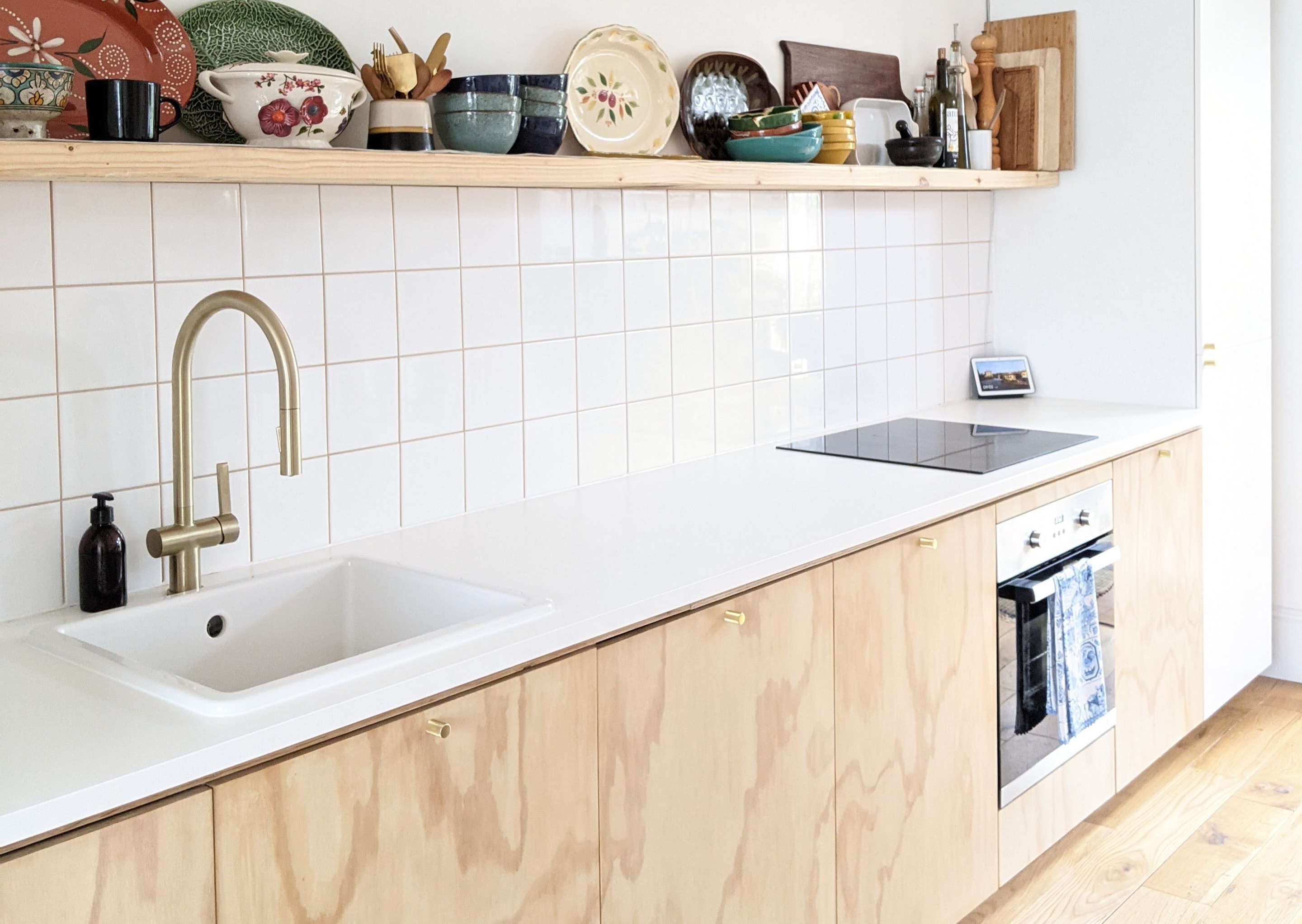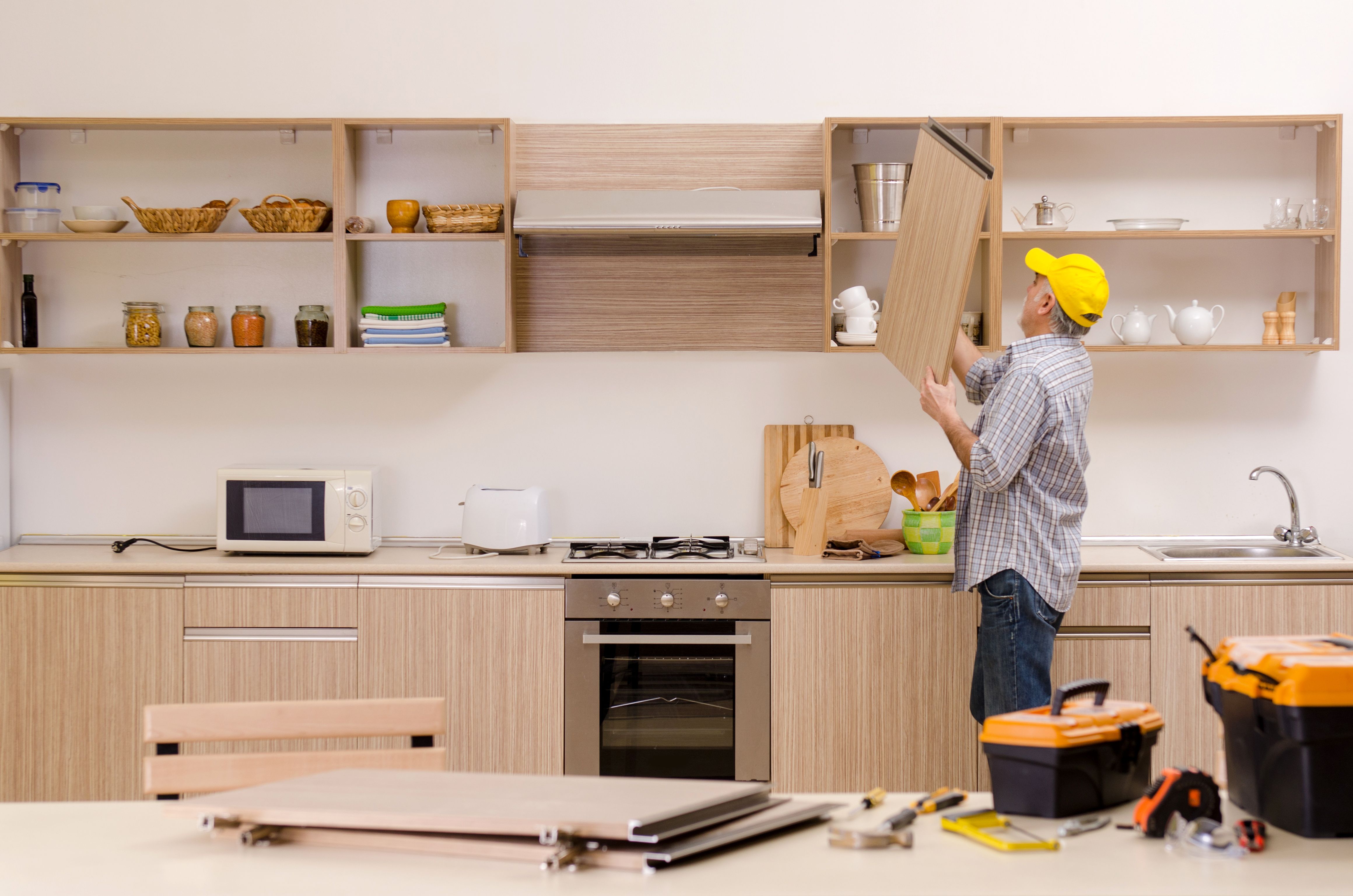Types of Plywood Suitable for Kitchen Cabinets

Choosing the right plywood for your kitchen cabinets is crucial for longevity and aesthetic appeal. The demanding environment of a kitchen, with its fluctuating humidity and potential for spills, requires a material that is both durable and resistant to moisture. Several plywood types offer varying degrees of suitability, each with its own strengths and weaknesses. Understanding these differences is key to making an informed decision.
Hardwood Plywood for Kitchen Cabinets
Hardwood plywood, typically made from species like oak, maple, cherry, or birch, offers superior strength, stability, and aesthetic appeal compared to softwood options. The dense wood fibers provide excellent resistance to dents and scratches, crucial for high-traffic areas like kitchens. However, hardwood plywood tends to be more expensive than softwood alternatives. Its inherent beauty also means it’s often chosen for its visual impact, enhancing the overall kitchen design. The grain patterns are typically more pronounced and varied, offering a richer texture than softwood. For instance, oak plywood might exhibit a prominent, open grain pattern, while maple presents a tighter, more uniform grain. The variations in color and grain are a key part of its appeal. However, its higher cost and susceptibility to moisture damage if not properly sealed need to be considered.
Softwood Plywood for Kitchen Cabinets
Softwood plywood, commonly made from pine, fir, or spruce, is a more budget-friendly option. It’s lighter than hardwood plywood and easier to work with, making it a popular choice for DIY projects. However, softwood is less durable and less resistant to moisture than hardwood. While suitable for cabinet construction in less demanding environments, its susceptibility to warping and damage from water exposure makes it less ideal for kitchens unless treated with multiple coats of high-quality sealant. The grain pattern of softwood plywood is typically less pronounced than hardwood, often appearing smoother and more uniform. Pine, for example, might show a straight, even grain, while fir can display more knots and variations in texture.
Marine-Grade Plywood for Kitchen Cabinets
Marine-grade plywood is engineered for extreme durability and moisture resistance. It’s constructed with waterproof glue and exterior-grade veneers, making it exceptionally resistant to water damage. This makes it an excellent choice for kitchen cabinets, especially in areas prone to high humidity or frequent cleaning. While significantly more expensive than other types, its longevity and resistance to warping justify the cost for many homeowners. The grain patterns in marine-grade plywood can vary depending on the veneer used, but it generally provides a similar aesthetic to the other plywood types, though often with a more consistent and less pronounced grain due to the manufacturing process. Its exceptional strength and stability are its primary selling points.
Plywood Comparison Table
| Type | Durability | Water Resistance | Cost |
|---|---|---|---|
| Hardwood (Oak, Maple) | High | Moderate (requires sealant) | High |
| Softwood (Pine, Fir) | Moderate | Low (requires sealant) | Low |
| Marine-Grade | Very High | Very High | Very High |
Factors to Consider When Choosing Plywood for Kitchen Cabinets

Selecting the right plywood for your kitchen cabinets is crucial for both aesthetics and longevity. The kitchen environment presents unique challenges, demanding careful consideration of material properties and environmental factors to ensure your cabinets withstand daily wear and tear and the often harsh conditions. Ignoring these factors can lead to premature warping, swelling, or even structural failure.
Plywood Selection Based on Cabinet Location
The placement of your cabinets significantly impacts the type of plywood needed. Cabinets near the sink or dishwasher are exposed to significantly higher humidity levels than those located away from water sources. Similarly, cabinets near the stove face fluctuating temperatures and potential grease splatters. Moisture-resistant plywood, such as exterior-grade plywood with a waterproof glue, is essential for cabinets in high-humidity zones to prevent warping and delamination. For cabinets near the stove, consider a plywood with a higher resistance to heat and grease. Using a less durable plywood in these areas could result in costly repairs or replacements down the line. For example, a cabinet door made of standard interior-grade plywood placed near a constantly steaming sink might warp and swell within a year, whereas exterior-grade plywood would likely withstand these conditions for many years.
Plywood Thickness for Different Cabinet Components
Choosing the appropriate plywood thickness is critical for cabinet strength and stability. Thicker plywood provides greater structural integrity, crucial for components that bear significant weight, such as cabinet sides and shelves. Thinner plywood is generally suitable for cabinet doors and drawer fronts, where strength requirements are less demanding. As a general guideline, ¾-inch plywood is commonly used for cabinet sides and shelves, while ½-inch plywood might suffice for doors and drawer fronts. However, this can vary depending on the cabinet’s design and intended load capacity. Using thinner plywood for heavily loaded shelves could lead to sagging and potential failure, while using thicker plywood for doors might result in unnecessarily heavy and cumbersome cabinets.
Environmental Impact of Plywood Choices
The environmental impact of plywood varies significantly depending on the type of wood used, the manufacturing process, and the sourcing practices of the supplier. Sustainable forestry practices are crucial for minimizing the environmental footprint. Plywood made from rapidly renewable wood species, such as poplar or bamboo, generally has a lower environmental impact than plywood made from slower-growing hardwoods like oak or cherry. Furthermore, the use of formaldehyde-free glues significantly reduces the release of harmful volatile organic compounds (VOCs). Choosing plywood certified by organizations like the Forest Stewardship Council (FSC) ensures that the wood comes from responsibly managed forests.
- Plywood Type: FSC-certified hardwood plywood (e.g., oak, maple)
- Environmental Footprint: Moderate to High (depending on sourcing and manufacturing)
- Considerations: Higher cost, slower-growing species, potential for higher VOC emissions if not certified.
- Plywood Type: FSC-certified softwood plywood (e.g., pine, fir)
- Environmental Footprint: Moderate (depending on sourcing and manufacturing)
- Considerations: Lower cost than hardwood, faster-growing species, still potential for VOC emissions if not certified.
- Plywood Type: Bamboo plywood
- Environmental Footprint: Low (rapidly renewable resource)
- Considerations: Potential for higher cost, may require special finishing techniques.
Plywood Finishing and Maintenance for Kitchen Cabinets: Which Is The Best Plywood For Kitchen Cabinets
![]()
Achieving a durable and aesthetically pleasing finish on plywood kitchen cabinets requires careful preparation and the selection of appropriate finishing methods. The longevity and appearance of your cabinets depend heavily on these steps. Proper maintenance is equally crucial for preserving their beauty and functionality over time.
Preparing Plywood for Finishing, Which is the best plywood for kitchen cabinets
Preparing the plywood surface is the foundation for a successful finish. This involves sanding to achieve a smooth surface, removing any imperfections, and ensuring proper cleaning. A multi-step approach is recommended for optimal results.
- Initial Sanding: Begin with a coarser grit sandpaper (around 80-100 grit) to remove any major imperfections, splinters, or raised grain. Work in the direction of the wood grain to avoid scratching.
- Intermediate Sanding: Progress to a medium grit sandpaper (around 120-150 grit) to further smooth the surface and remove any sanding marks left by the coarser grit. Again, sand with the grain.
- Fine Sanding: Finish with a fine grit sandpaper (around 220-240 grit) to achieve a perfectly smooth surface. This step is crucial for a flawless finish. Pay close attention to any remaining imperfections.
- Cleaning: Thoroughly clean the surface with a tack cloth or a slightly damp cloth to remove all dust particles. Dust can interfere with the adhesion of the finish.
- Primer Application (Optional): Applying a primer, especially on raw plywood, seals the wood, prevents staining inconsistencies, and provides a better surface for the topcoat. Allow the primer to dry completely before proceeding.
Plywood Finishing Options
Several finishing options exist, each offering unique benefits and drawbacks in terms of durability and maintenance.
- Painting: Painting offers excellent durability and protection against moisture and scratches. It also allows for a wide range of colors and finishes.
- Pros: Durable, easily repairable, wide color selection.
- Cons: Can hide the natural wood grain, requires more preparation.
- Staining: Staining enhances the natural wood grain and color, creating a more rustic or traditional look. However, it offers less protection than paint.
- Pros: Shows wood grain, creates a natural look.
- Cons: Less durable than paint, requires more careful maintenance, susceptible to water damage.
- Varnishing: Varnishes provide a clear protective layer that enhances the natural wood while offering good protection against scratches and moisture.
- Pros: Protects wood, enhances natural appearance, relatively easy to maintain.
- Cons: Can yellow over time, requires multiple coats for adequate protection.
Maintaining Plywood Kitchen Cabinets
Regular maintenance is essential for prolonging the life and beauty of your plywood cabinets.
- Regular Cleaning: Wipe down surfaces with a damp (not soaking wet) cloth and a mild detergent regularly to remove dust and spills. Avoid abrasive cleaners.
- Addressing Scratches: Minor scratches on painted cabinets can often be buffed out with a fine-grit sandpaper and repainted. For stained or varnished cabinets, touch-up stain or varnish may be necessary.
- Water Damage Repair: If water damage occurs, address it immediately. Dry the area thoroughly and, depending on the severity, consider sanding and refinishing the affected area. For significant damage, professional help may be needed.
- Preventative Measures: Use coasters under glasses and other items to prevent water rings. Avoid placing hot items directly on the cabinet surfaces.
- Periodic Refinishing: Depending on the type of finish and the level of wear and tear, periodic refinishing may be necessary to maintain the appearance and protection of your cabinets. This could involve a simple re-coating of varnish or a more extensive sanding and repainting process.
